Roses care and growing guide: expert advice for these beautiful blooms
With our top tips, you'll have the best roses around, whether they're tumbling from an arch, framing a doorway, or displayed in a patio pot

Graham Rice
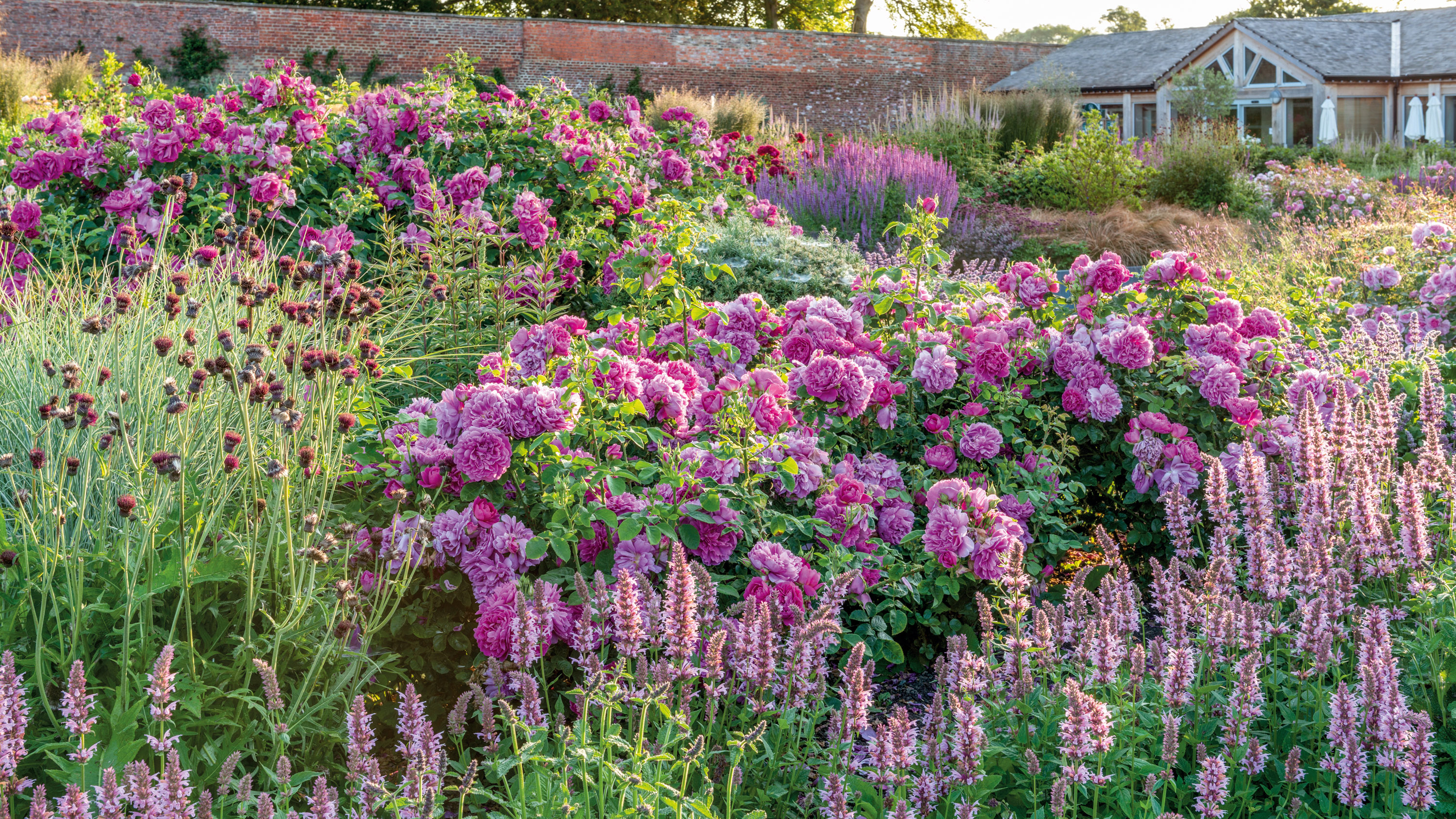
You don't need an English country garden to want to learn how to grow roses. They can fit happily into so many different garden styles – from prettily jumbled cottage-inspired schemes to contemporary, pared-back plots.
In fact, there are types of roses for every kind of space. Miniature ones are perfect for pots on a balcony or patio, shrub roses are ideal for cultivating in borders, rambling roses will romp over a porch in a mass of color, and the more restrained climbing rose is a lovely choice for cloaking a trellis.
These classic blooms come in a palette of soft hues, from pure white to blush pink, peach, gold, scarlet, lemon, plum, and deep, velvety cerise. And many varieties are deliciously fragranced. It's no wonder they're many gardeners' favorite flower.
Although they will need pruning and feeding, caring for roses is generally straightforward. We've rounded up everything you need to know to add these luscious blooms to your garden.
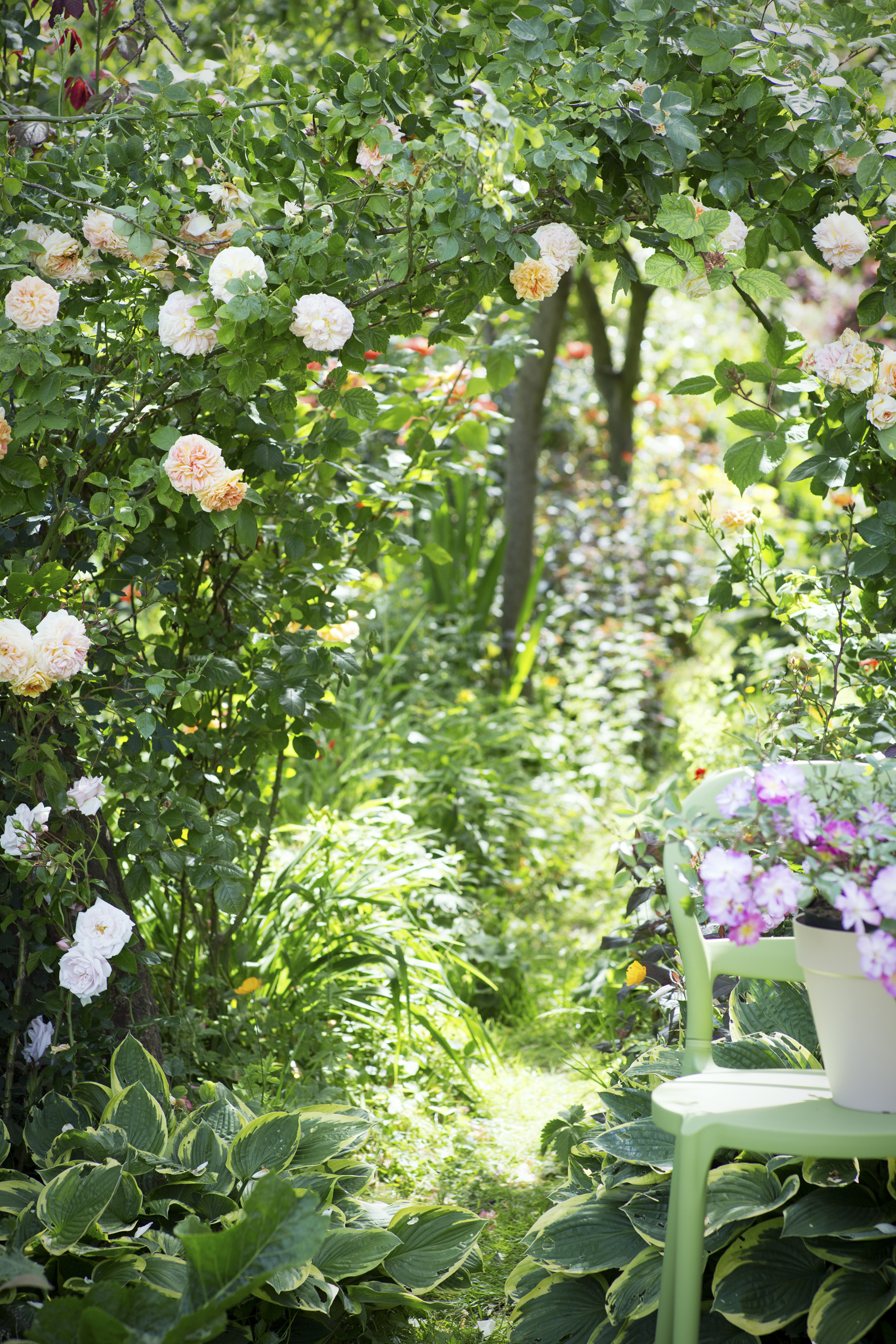
Where to grow roses
Roses are tolerant of many types of soil. According to Marcus Eyles of Dobbies Garden Centres, 'they are easy to grow in any fertile well-drained soil – they will even grow well in heavier clay soils.'
Most roses prefer a sunny spot, with at least four hours of sunshine a day, although, 'some tolerate light shade,' says Marcus.
Give them plenty of space. They need to be planted at least one meter away from other plants so that air can circulate around them. This reduces the risk of certain fungal diseases. Exposed, windy spots should be avoided, however, as this can cause the roots to loosen and the roses may die.
Rambling and climbing roses will need a structure to grow against, whether that is a trellis, shed, wall, or pergola. Tie in the stems horizontally, as it makes the rose produce side shoots, which produce the flowers. Keep tying them in as the rose grows.
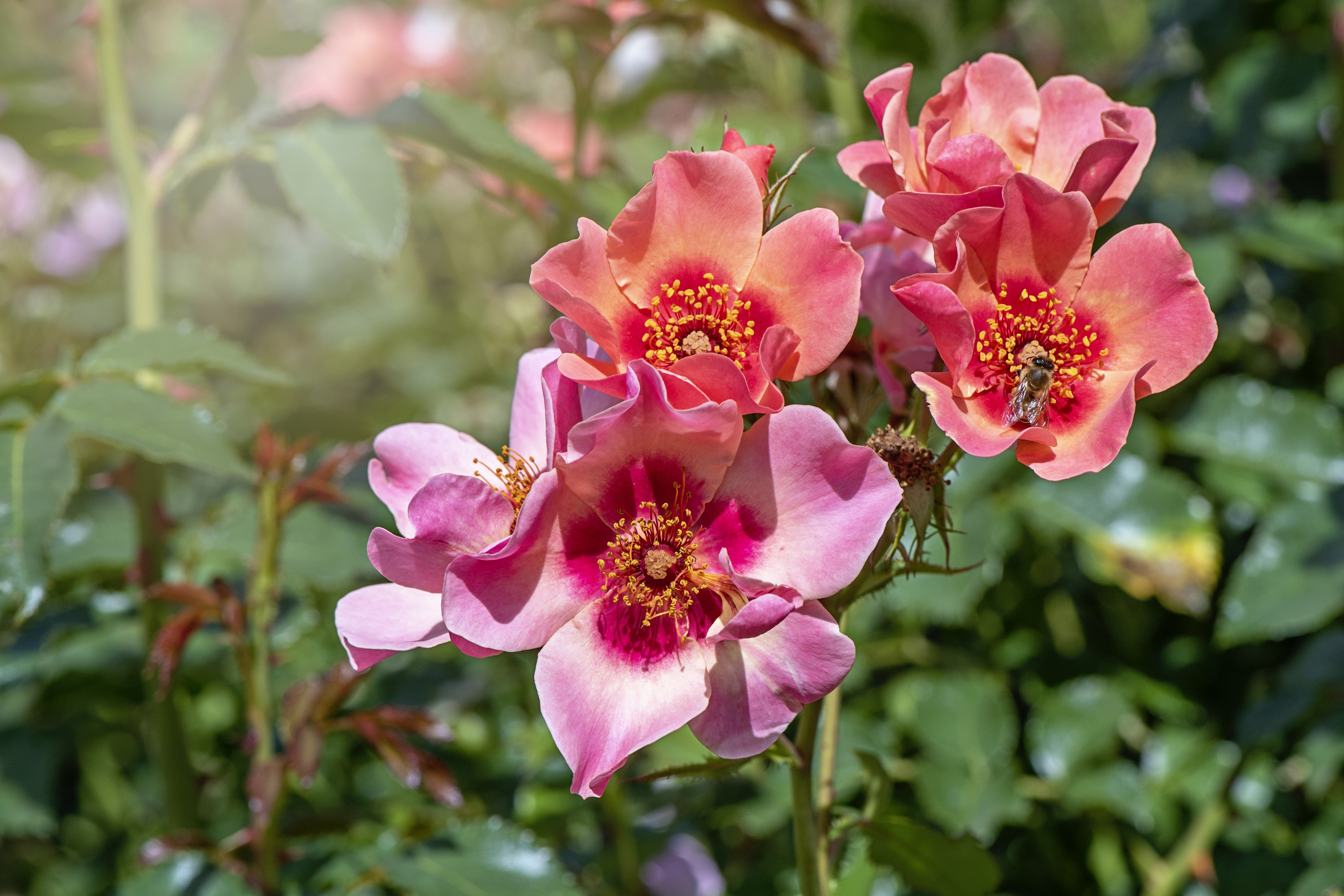
How to plant roses
'Ideally, the planting hole should be twice the width of the root system,' advises John Negus, an expert from Amateur Gardening magazine. 'If your soil has a high clay content, use a garden fork to break down the cavity sides to avoid creating a "bucket" that runs the risk of becoming waterlogged.
'Finish by watering liberally to settle soil close to the roots and then mulch with some well-rotted manure, making sure it doesn't touch the stems,' he says.
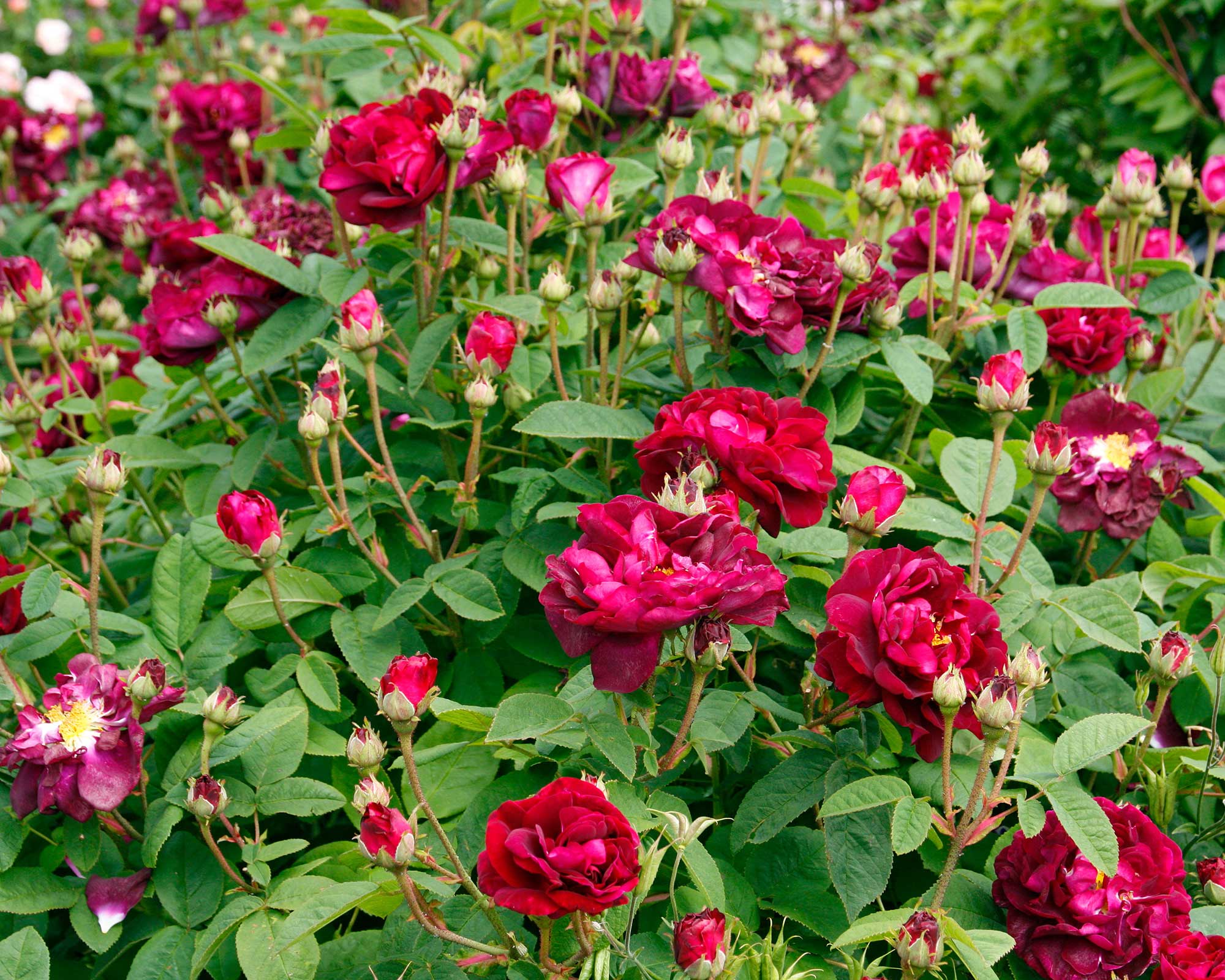
When to plant roses
Roses can be planted at almost any time of year. But avoid doing so in the middle of winter when the ground is frozen, or times when soil is waterlogged or during a drought.
Late winter is a good time to plant, however. This is when bare root roses are available to buy by mail order or at the garden center. Bare root roses come without compost and a pot, and although they look off-putting, resembling a bundle of dry-looking roots, they are cheaper to purchase than potted ones. They will soon grow strong and healthy, putting on plenty of foliage and flowers in their first season.
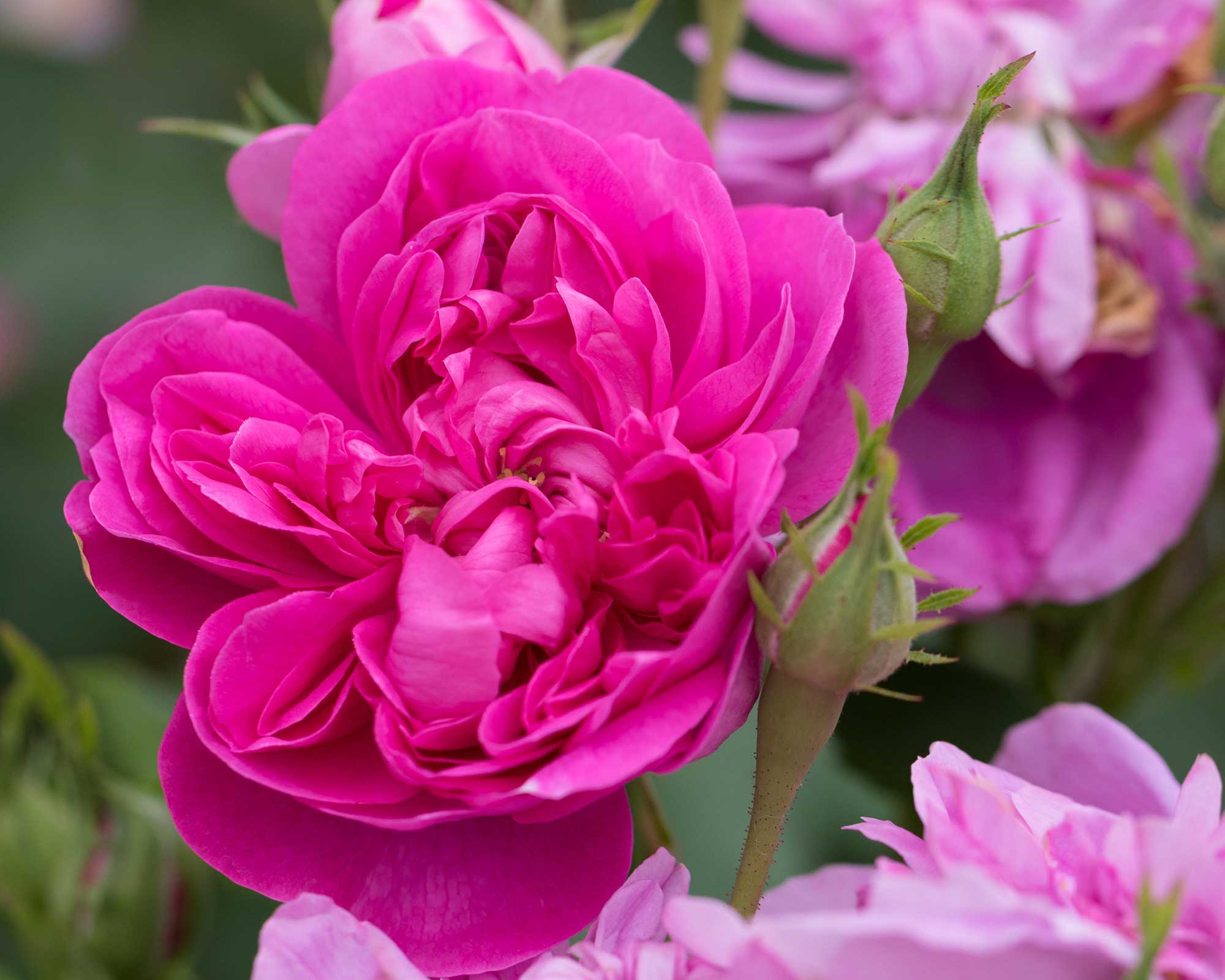
How to care for roses
Roses have an unfair reputation for being high maintenance, but one thing is true: they are hungry plants and appreciate a good feed at the start of the growing season. Marcus Eyles from Dobbies explains: 'For healthy growth and lots of blooms, feed each spring with granular rose fertilizer forked into the surrounding soil.'
A second feed is recommended in mid-summer. Use a specially-formulated rose food, widely available from garden centers. The food should be sprinkled around the base of the plant. As is generally the case when fertilizing plants, take care not to over-feed roses, as this can do more harm than good.
Mulching after you've added the fertilizer is crucial for the best results – layer it on at least 2in (5cm) deep. This will help suppress weeds and the soil to retain moisture. 'Make sure you spread it to the width of the canopy,' advise the experts at David Austin Roses. They recommend using Carr's organic soil improver, garden compost, or well-rotted manure.
Deadheading the flowers generally results in more blooms. When you spot a flower that has gone over, pinch or cut it off where the base joins the stem. For roses that flower in a cluster, remove the entire head once the flowers have finished. Cut it off with your best secateurs, just above the first leaf with five leaflets.
Most roses will need a bit of pruning from time to time, too. Our dedicated guide on how to prune roses has everything you need to know.
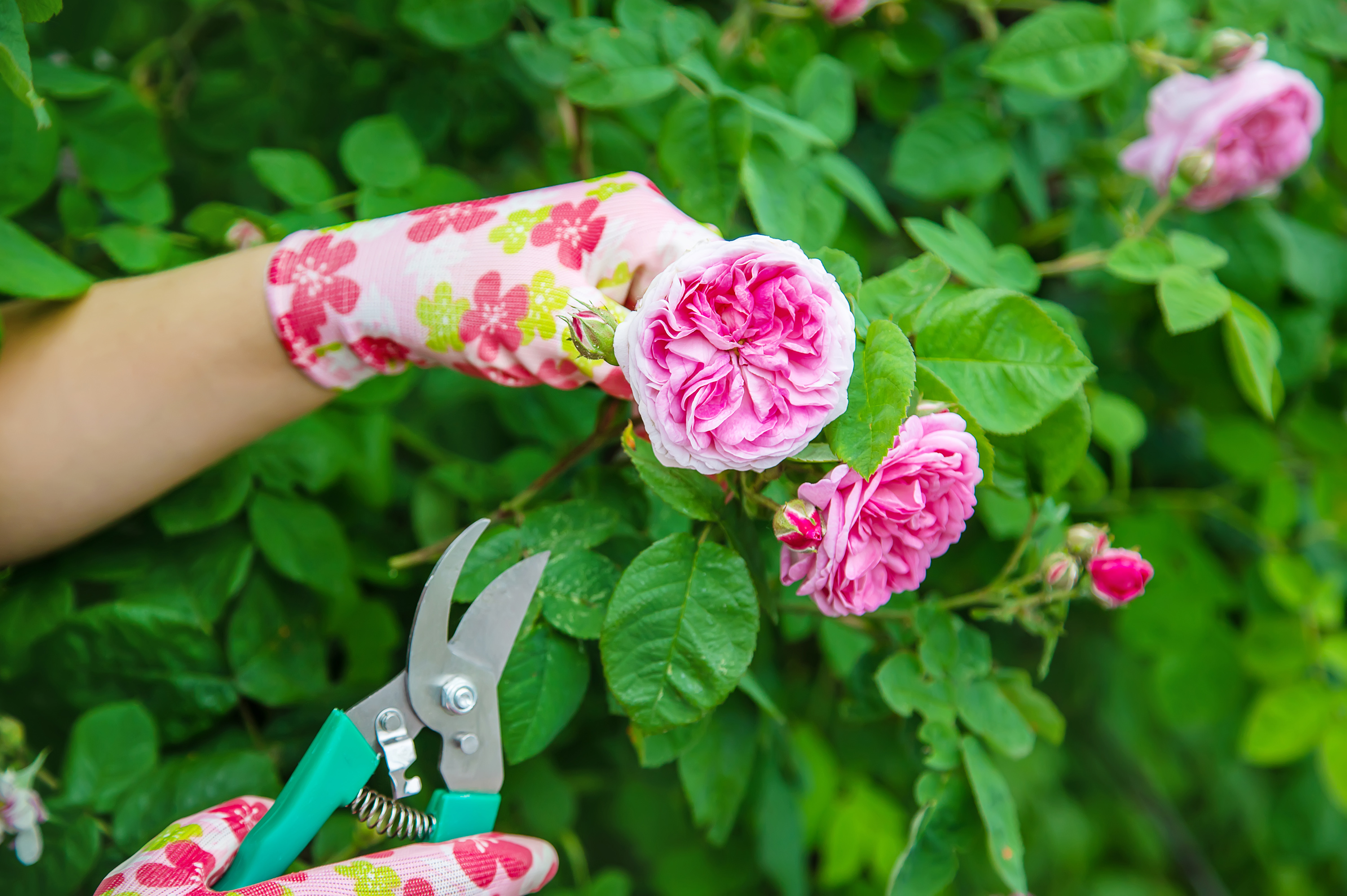
How to water roses
David Austin Roses’ expert growers recommend these tips when it comes to watering your roses:
- Water as close to the base of the plant as possible. Go slowly, allowing the water to soak in.
- Do not water over the foliage or the flowers of a rose as this encourages certain diseases, such as rose black spot.
- If you are watering with a garden hose, avoid using a jet spray. Some hoses have a special rose setting, but if yours doesn't, ensure that the pressure is not too high.
- As a general rule, each time you water, shrub roses and roses in pots need five liters, while climbing, rambling and standard tree roses need 10 liters.
From mid-fall to late winter, roses require little or no watering. In spring, they will need hydrating if there is a dry spell lasting two weeks or more. Newly-planted roses need watering every two to three days.
Between early summer and early fall, water established roses every other week, and newly-planted ones twice a week. Roses in pots and containers need a drink every other day. Water twice as often if the weather is very hot and dry.
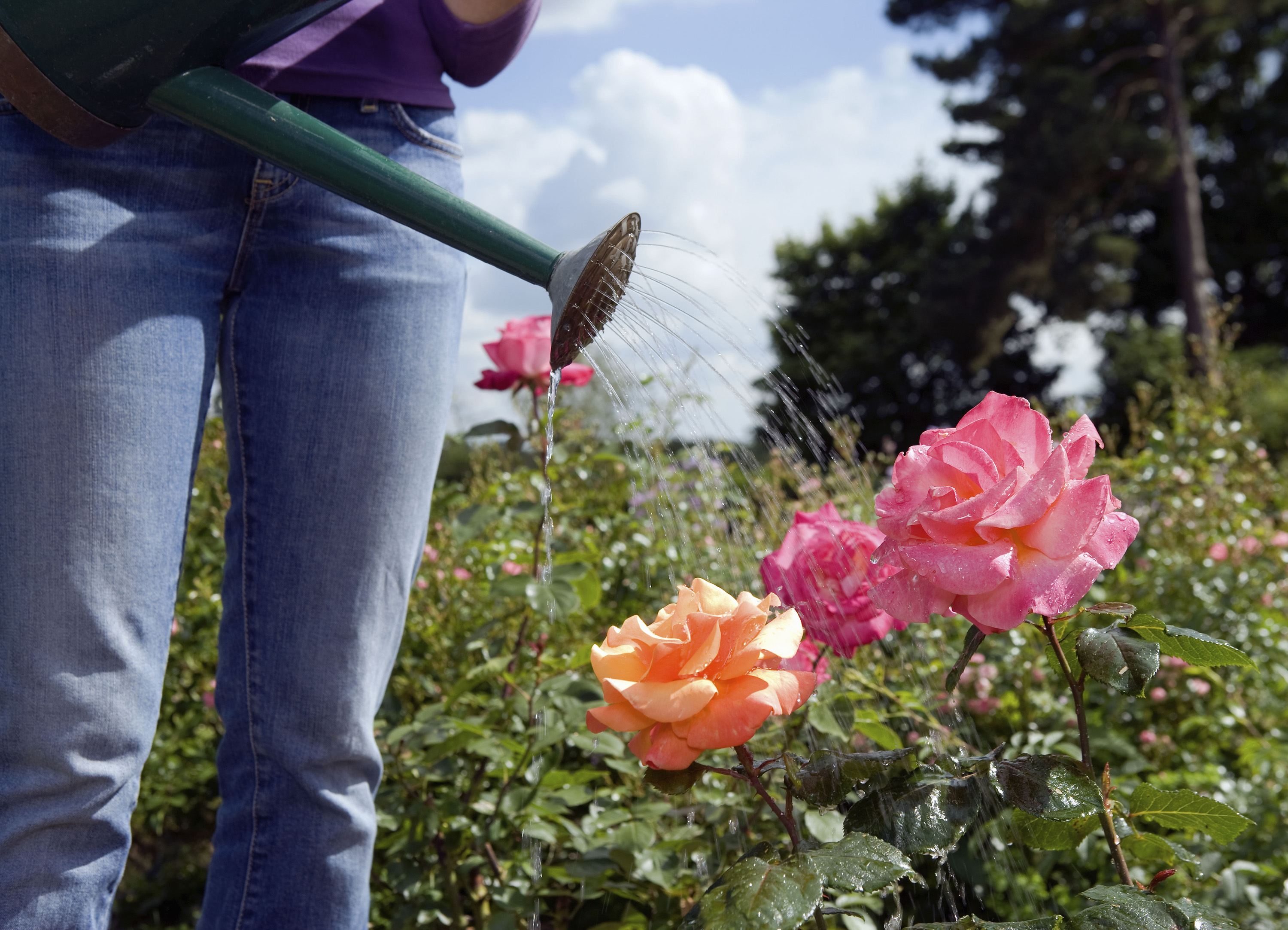
Problems with growing roses
There are a number of rose pests and diseases that can spoil the chances of success with these plants. The key is to inspect them regularly and to act promptly if you find something amiss.
Watch out for suckers, which are whippy shoots. They grow when the grafted root of the rose produces a shoot of its own which is different from the rest of the plant. They are undesirable because they may remove vital nutrients from getting to the top of the plant, ultimately causing it to die. To remove a sucker, find the source (below soil level if necessary) and pull away. 'If you are unsure if you have a sucker or fresh growth, leave it until it's obvious that it matches the rest of the plant,' say the David Austin experts. Suckers can develop when a rose's roots are damaged by digging or hoeing, so take care when working around the base of the plant.
Waterlogged soil can kill roses at their roots. Ensure that they grow in a well-drained area. If they are to be put into a container, make sure to add plenty of drainage holes before planting.
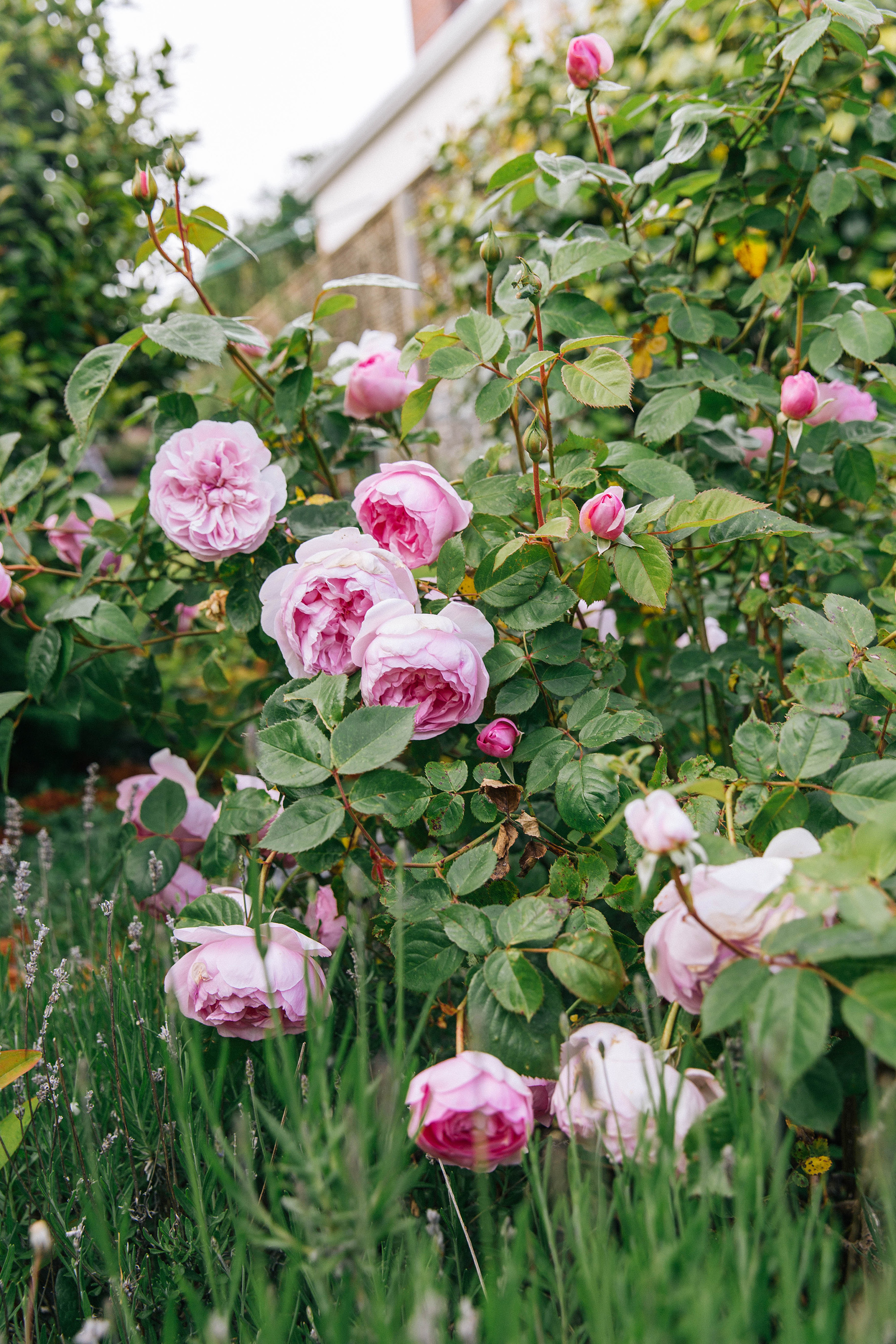
What does it mean when roses are grown 'on their own roots'?
Traditionally, roses were propagated in the nursery by pieces of the named rose variety being grafted onto a different, strong growing variety chosen for the vigor of its roots and its ability to grow well in a range of soils.
However, it became clear that growing roses from cuttings was a simpler and more economical method and fitted in better with the propagation of other plants in the nursery.
So now, instead of a rose bush being made up of two separate parts – the named variety and the rootstock joined together – most roses are grown “on their own roots”. This means the flowering variety and the roots are all the same plant.
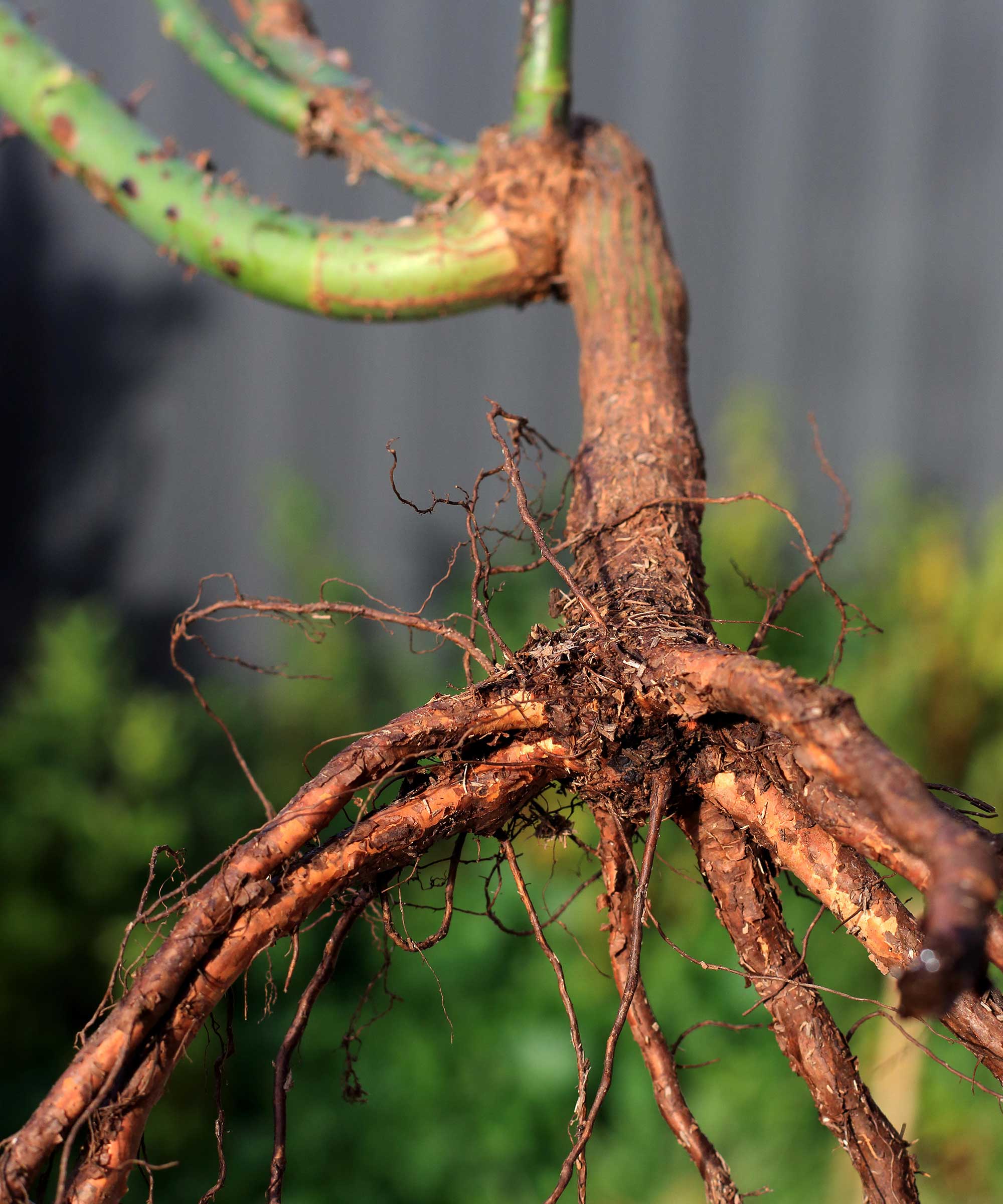
When is the best time to move a well-established rose?
If you've got some new landscaping with roses plans, you may want to move your existing plants to suit.
The best time to relocate your rose plants is from late winter to early spring, as long as the soil is workable – crumbly, free from frost, and not soggy – and buds have not elongated to the point where they are easily broken.
'Make sure you plant your roses in a spot where no other roses have been grown for several years to reduce the risk of replant disease,' advises John Negus. 'This is a condition thought to be caused by a build-up of soil pests and disease microbes that prevents plants from thriving in their new spot.
'If you need to plant the rose where they have recently grown, you can give them a better chance by replacing the soil with fresh or planting your rose with its roots in a cardboard box. The theory for this is that by the time the cardboard rots down, the roots will be strong and established enough to thrive.
'Before planting, shorten bushes to within 18in (45cm) of the base and set them in generous holes that have been enriched with well-rotted compost or manure. Make sure that, after planting, they are at the same depth at which they were previously growing.'
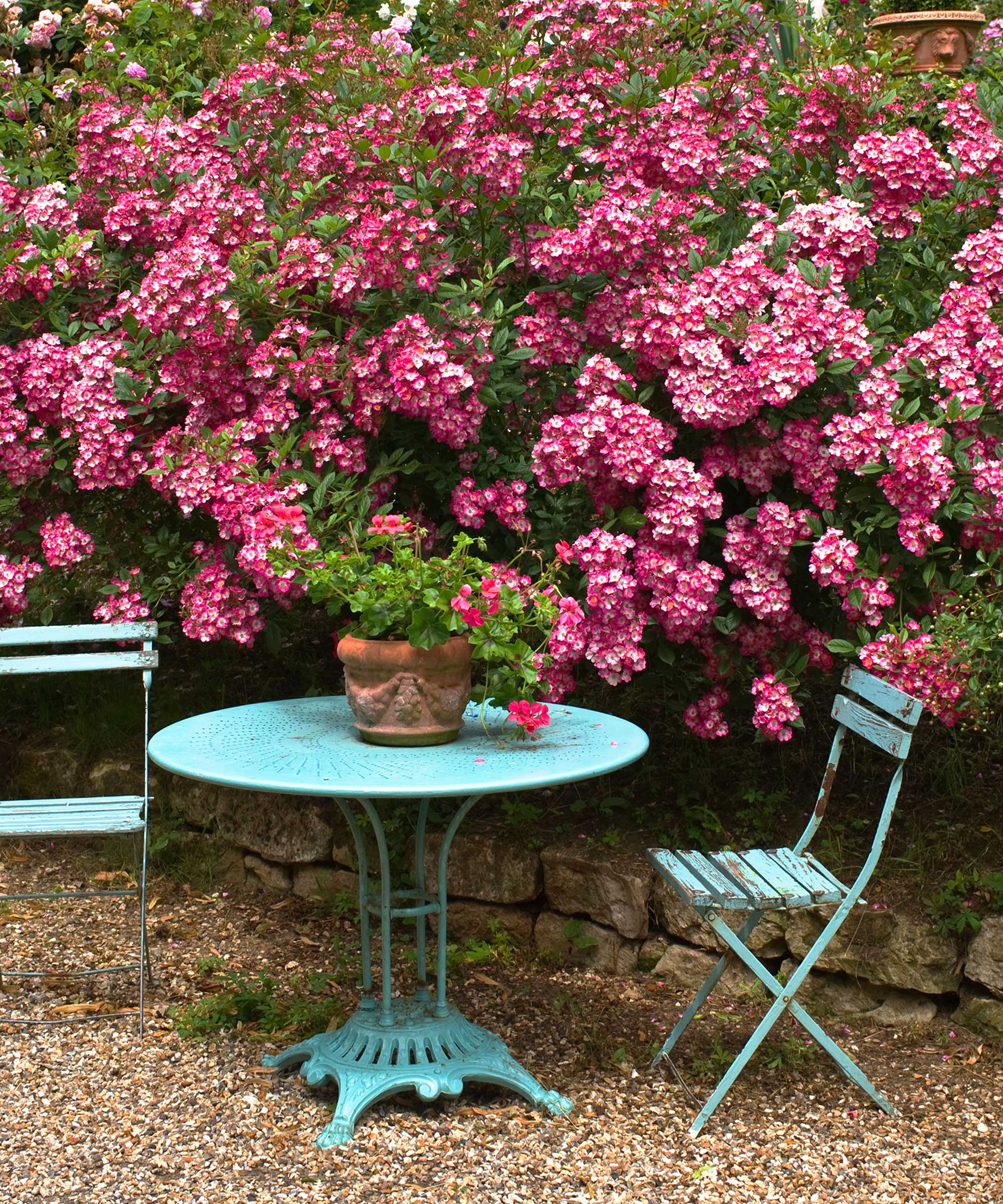
How can you get cut roses to last longer in a vase?
Roses are a lovely cutting garden flower, filling a room with their delicate scent. And there is a top tip to make them last longer.
'The best way to keep roses perky is to make a pin-prick hole in the stem immediately beneath a bloom, then immerse the stems in boiling water,' says John Negus.
'Air is driven out and cells are fully charged with moisture. You can also add floristry fertilizer to the water.'
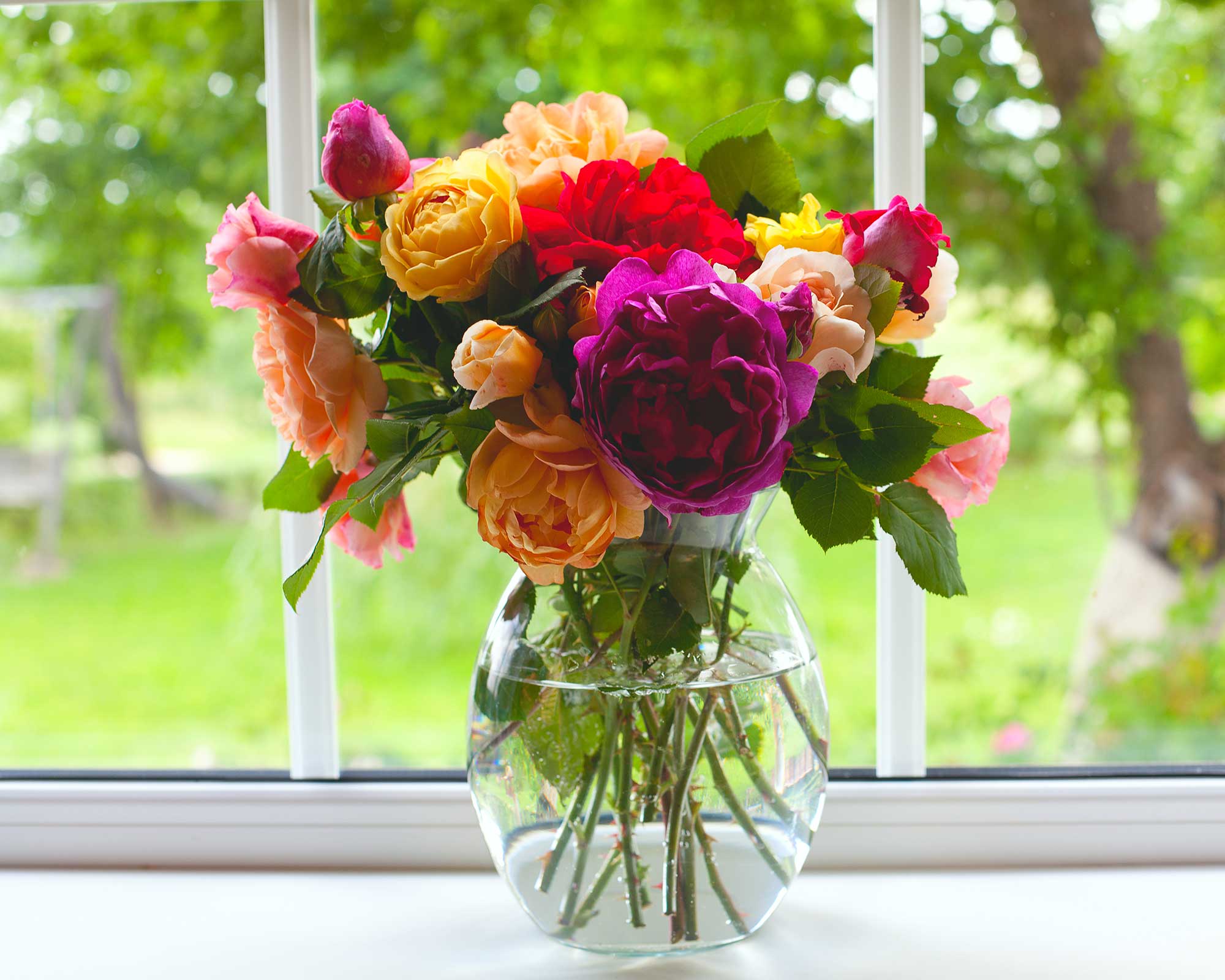
How to choose roses for your garden
If you know the name of the rose you need, then it is simple. If not, start browsing online retailers. Some websites have a search facility to help narrow down your choices. This can be useful in choosing the type you want – from heirloom roses to modern varieties. Some will also allow you to sort results by flower color, strength of fragrance, height, hardiness zone, repeat or once-flowering, and other features. Play around with the search criteria until you come up with enough tempting suggestions.
Also, consider where you intend to plant your new rose before you order it. Some roses make quite large plants, others are much neater and more suitable for small gardens. Make sure that you choose a variety that will mature to the right size for the space you have in mind.
Finally, some gardeners simply like to browse the varieties on offer until they find ones they like the look of – and order them all!
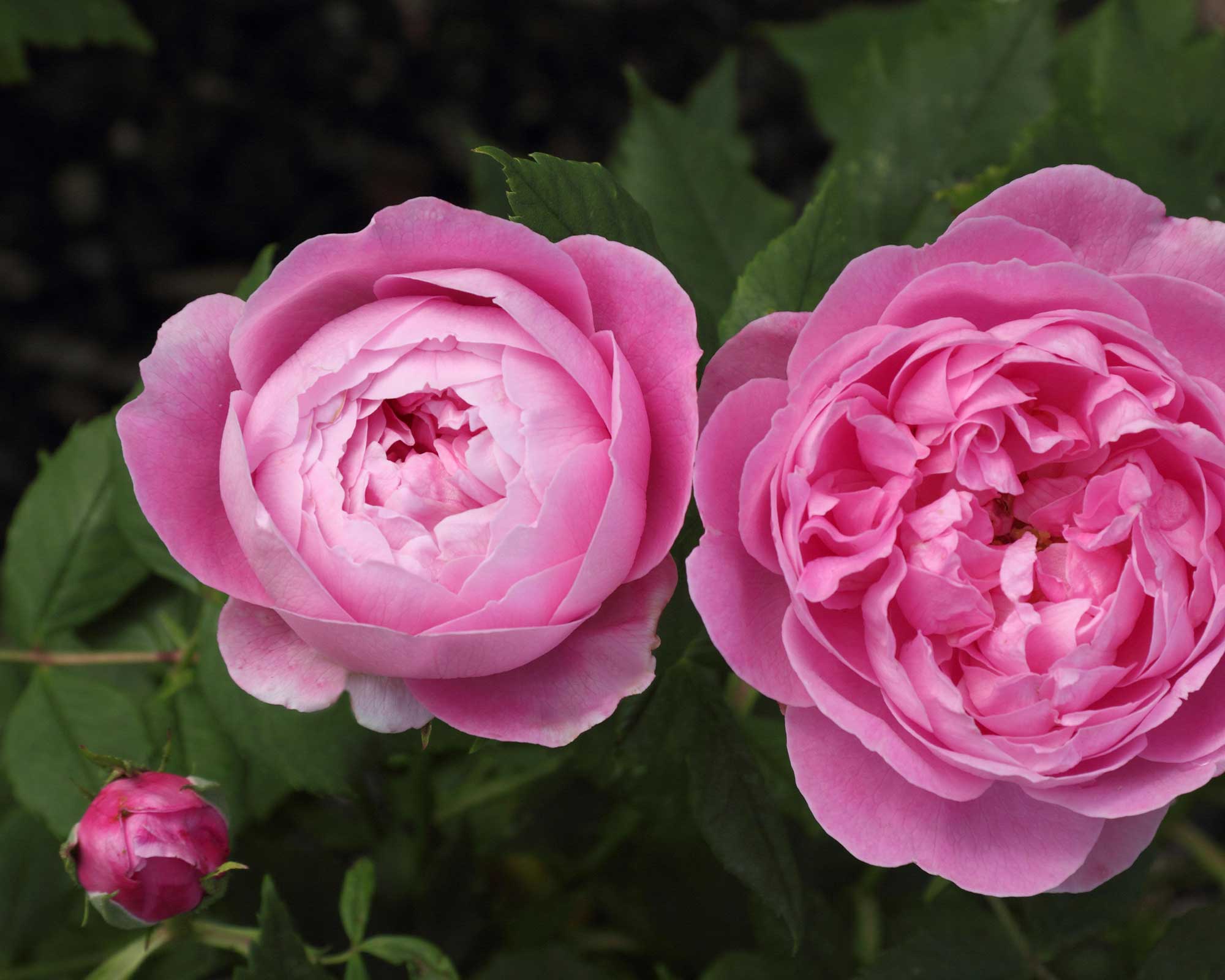
Where to buy roses
Now you've got the lowdown on roses care, you may be tempted for some of your own. You can buy them as either bare root plants (the cheaper option) or as pot-grown plants. Follow our quicklinks below to shop roses for your garden.
Where to buy roses in the US:
Where to buy roses in the UK:
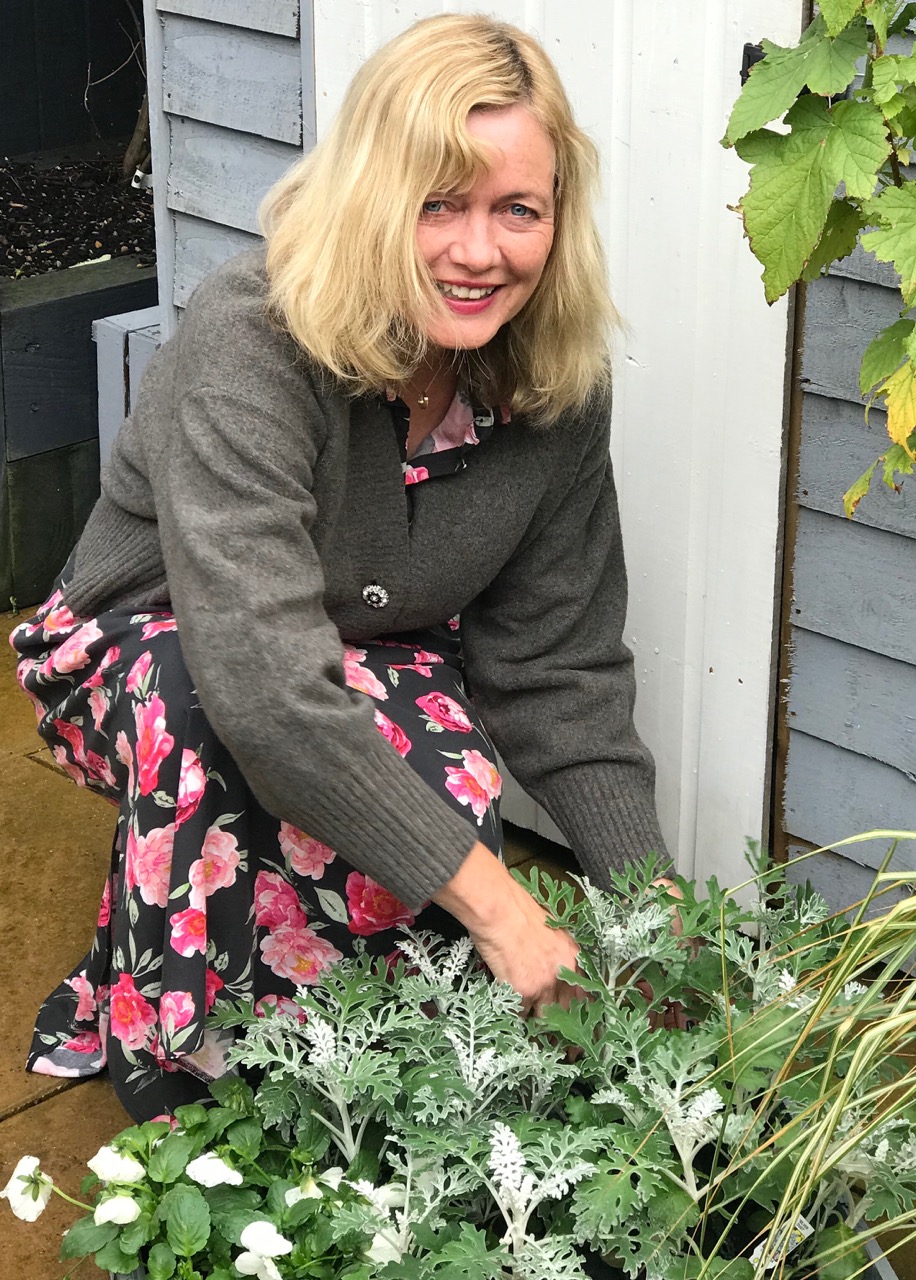
An experienced freelance journalist, editor and columnist writing for national magazines and websites, Fiona now specialises in gardens. She enjoys finding and writing about all kinds, from the tiniest town plots to impressively designed ones in grand country houses.
- Graham RiceFreelance writer
